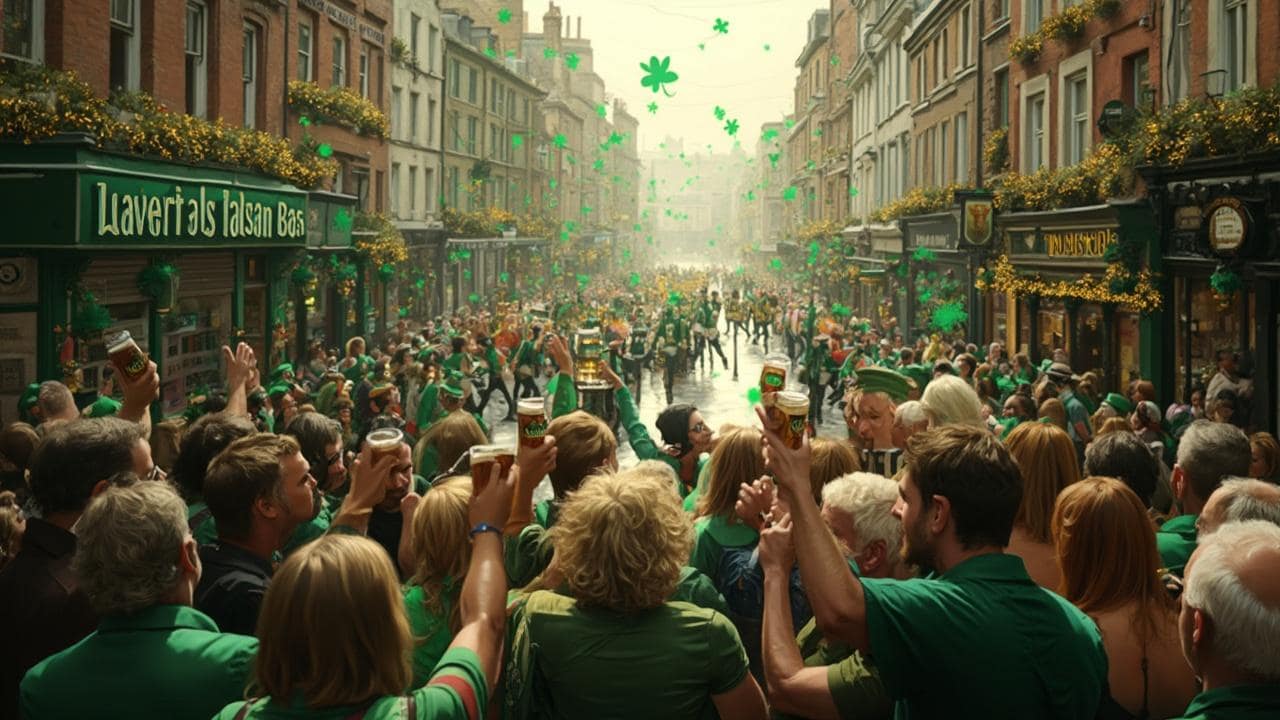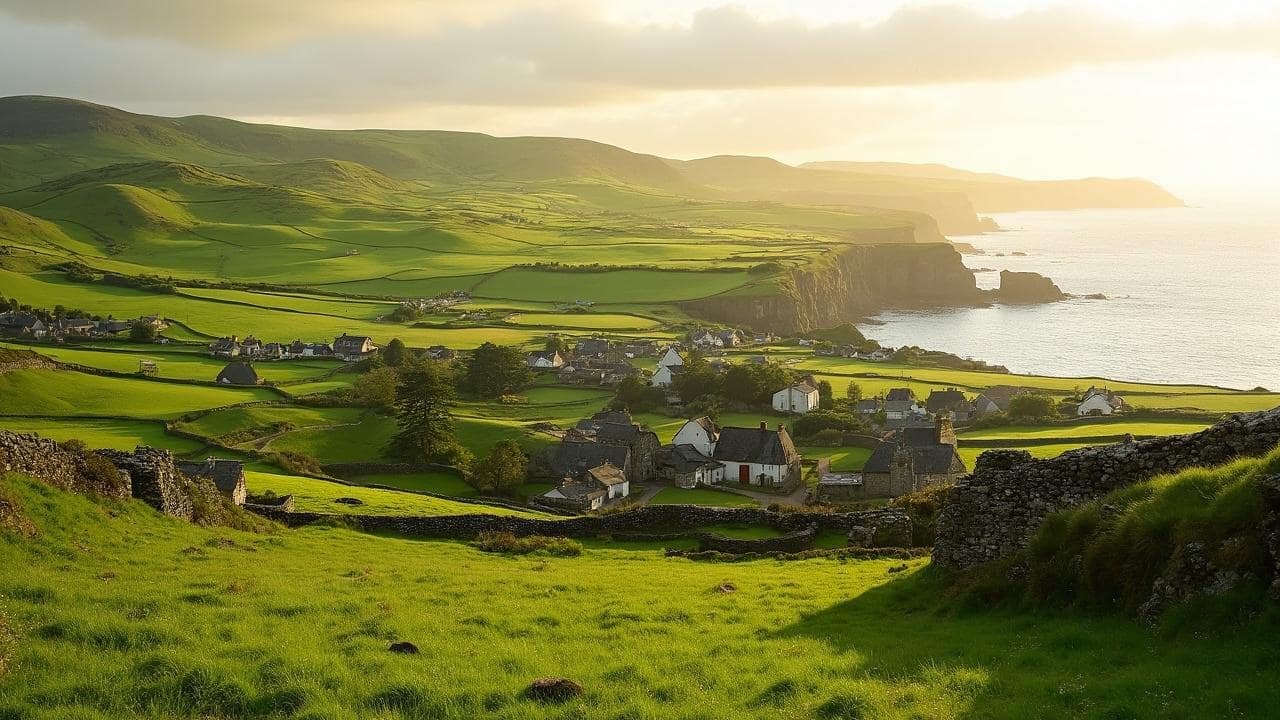Ah, the Emerald Isle! As a French digital nomad traversing the globe for years, I’ve had my fair share of adventures. But there’s something genuinely magical about Ireland that keeps drawing me back.
Whether you’re a first-time visitor or a seasoned traveler, timing your trip to this enchanting country can make all the difference.
Let me share the insider’s scoop on when to visit Ireland for the best experience possible.
In this article
- Unveiling the best seasons to explore Ireland
- Navigating peak season and budget-friendly options
- Weather wonders and seasonal highlights
- Essential tips for your Irish adventure
Unveiling the best seasons to explore Ireland
When choosing the best time to visit Ireland, it’s all about finding that sweet spot between good weather and manageable crowds.
Spring (April-May) and Autumn (September-October) offer the perfect balance. I’ve had some of my most memorable Irish experiences during these shoulder seasons.
I’ve witnessed the countryside burst into life in spring, with wildflowers dotting the lush green landscapes.
The weather is mild, typically ranging from 8°C to 15°C (46°F to 59°F), and the longer daylight hours are perfect for exploring. One year, I stumbled upon a local May Day festival in a small village—an authentic experience you might miss during peak season.
On the other hand, Autumn paints Ireland in stunning gold and red hues. The temperatures are similar to spring, with a cozy atmosphere as the evenings draw in.
It’s an ideal time for hiking and photography, with the changing foliage providing a breathtaking backdrop.
However, Ireland’s weather can be unpredictable. As the locals say, “If you don’t like the weather, wait five minutes!”
So, whenever you visit, always be prepared for some rain. Trust me, it’s all part of the Irish charm!
Navigating peak season and budget-friendly options
If you’re wondering about peak season in Ireland, mark your calendar for June through early September.
Ireland experiences its warmest weather during this time, with temperatures ranging from 15°C to 20°C (59°F to 68°F). The long summer days, daylight lasting until nearly 11 pm in June, are perfect for outdoor adventures.
However, as a budget-conscious traveler, I’ve learned that peak season has drawbacks. Accommodation and flight prices soar, and popular attractions can get uncomfortably crowded. I once spent 45 minutes queuing to kiss the Blarney Stone in August—not exactly the serene Irish experience I had in mind!
For those looking to stretch their euros, consider visiting Ireland during the cheapest time.
Generally, November and February offer the best deals, excluding holiday periods. During these months, I’ve snagged fantastic deals on cozy B&Bs and luxury castle stays.
Here’s a quick breakdown of what you can expect in terms of prices and crowds throughout the year:
| Season | Crowds | Prices | Weather |
|---|---|---|---|
| Spring (Apr-May) | Moderate | Moderate | Mild |
| Summer (Jun-Aug) | High | High | Warm |
| Autumn (Sep-Oct) | Moderate | Moderate | Mild |
| Winter (Nov-Mar) | Low | Low | Cold |
Keep in mind that certain events can cause spikes in prices and crowds. St. Patrick’s Day (March 17th) is a prime example.
While it’s an incredible experience, be prepared for higher costs and bustling streets, especially in Dublin.

Weather wonders and seasonal highlights
Ireland’s climate is generally mild, thanks to the warming influence of the Gulf Stream.
However, each season offers its unique charms and challenges. Let me break it down for you:
- Spring: Mild temperatures, occasional showers, and blooming landscapes.
- Summer: Warmest weather, long daylight hours, and the best chance for outdoor activities.
- Autumn: Crisp air, stunning foliage, and harvest festivals.
- Winter: Cool temperatures, occasional frost, and festive atmosphere in cities.
In my travels, I’ve found that May and June typically offer the sunniest weather. During these months, I’ve enjoyed some of the most spectacular hikes along the Cliffs of Moher and through Killarney National Park.
However, remember that rain is a constant companion in Ireland, regardless of the season. On average, you can expect some form of precipitation about 150 days a year.
But don’t let this deter you! Some of my most magical moments in Ireland have happened during or just after a light rain, when the countryside seems to sparkle and rainbows appear as if by magic.
If you’re planning a winter visit, brace yourself for short days. In late November, it can get dark as early as 4 pm.
While this might limit outdoor activities, it’s the perfect excuse to cozy up in a traditional pub with a pint of Guinness and enjoy live Irish music – a year-round treat nationwide.
Essential tips for your Irish adventure
Before you pack your bags for the Emerald Isle, here are some final tips to ensure you make the most of your visit:
- Plan for varied weather: Layer your clothing and always carry a waterproof jacket.
- Consider your interests: If you’re into festivals, summer offers the most options, but you’ll find events year-round.
- Book in advance: Especially if you’re visiting during peak season or for popular events like St. Patrick’s Day.
- Explore beyond the cities: Some of Ireland’s most breathtaking scenery and authentic experiences are in rural areas.
- Be flexible: Irish weather can be unpredictable, so have indoor alternatives for your outdoor plans.
Remember, the best time to visit Ireland depends on your preferences and priorities. Whether you’re chasing the sun, seeking solitude, or looking to immerse yourself in Irish culture, there’s a perfect time to experience this incredible island’s magic.
I’m already planning my next Irish adventure. Something about the rolling green hills, warm hospitality, and rich history keeps calling me back.
So, grab your passport, pack your sense of adventure, and prepare to create unforgettable Irish memories. Sláinte!

